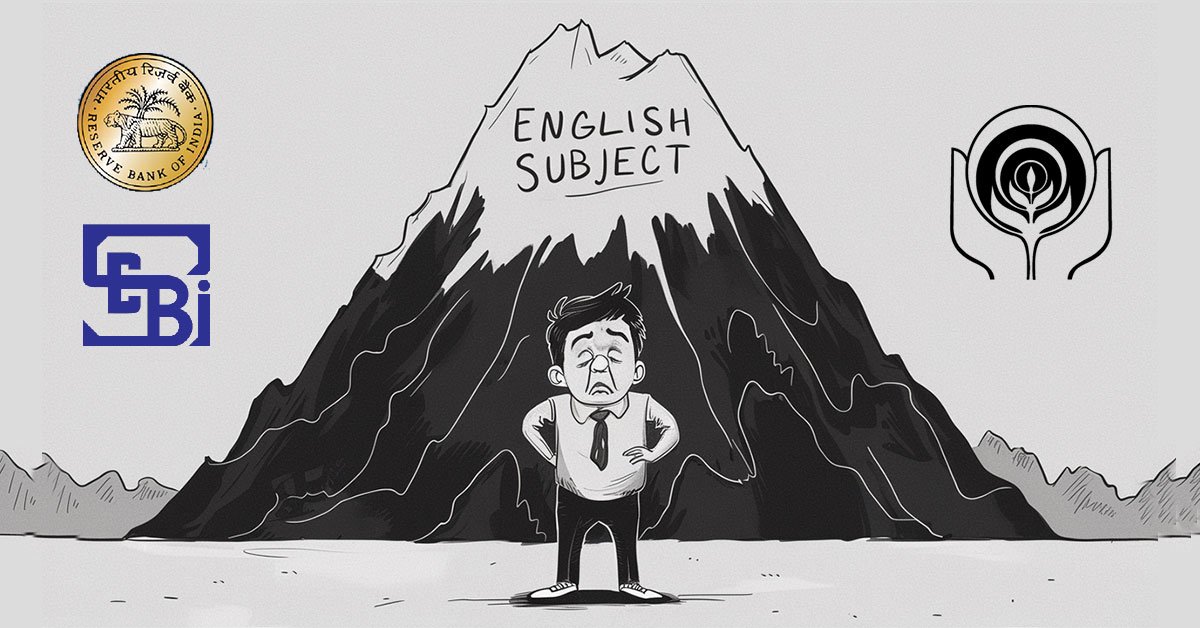Daily Current Affairs Quiz
5 February, 2025
Table of Contents
ToggleInternational Affairs
1. China Retaliates Against U.S. Tariffs
Context:
China declared new tariffs on US energy, autos and equipment as it aimed to hit back against President Trump’s fresh round of trade restrictions. It deepened a tariff battle that could involve new export controls, probes of American companies and retaliation in critical US agricultural markets.
Key Highlights:
China’s Retaliatory Tariffs
- Beijing’s Counterattack
- Tariffs of 15% on the import of U.S. coal and liquefied natural gas (LNG).
- Tariffs of 10% on crude oil, farm machinery, heavy vehicles, and pickup trucks.
- The U.S. had earlier levied an additional 10% tariff on Chinese products.
- The U.S. energy imports for China in 2024 were at a measly $7 billion, while its importation from Russia were a whopping $94 billion.
- Beijing’s Defense
Investigations against U.S. Companies
- Google
- The company is being probed on suspected violations of China’s Anti Monopoly Law.
- Google’s search engine and other services are currently banned in the mainland of China.
- PVH Corp. & Illumina
- Blacklisted by Beijing for “opposing” allegedly discriminatory practices of Chinese companies against Chinese companies.
- PVH is an owner of such brands as Tommy Hilfiger and Calvin Klein, which currently are under the investigation for discrimination against Xinjiang cotton.
China Increases Export Controls Over Key Metals
- Restrictions on exporting rare metals and chemicals like
- Tungsten, tellurium, bismuth, molybdenum-all those necessary for industries
- A latest in series of curbs that were enforced last year against exporting gallium and germanium-the two major semiconductors.
Trump’s Stand on Tariffs
- According to him, the main goal of such tariffs is the curb illegal immigration and drug smuggling.
Impact on India
- The ongoing trade war between the United States and China is expected to benefit India’s export sector, with government sources indicating optimism despite potential challenges.
- The escalation of the conflict between the two economic giants is likely to increase India’s trade opportunities with the US.
2. Deportation of Indian Immigrants from the US
Context:
US military C 17 aircraft landed in Amritsar carrying 205 Indian nationals who were deported from the United States. The deportation flight from San Antonio, Texas, is a part of the continued efforts under the Trump administration to grapple with illegal immigration.
Key Highlights:
- Donald Trump’s Illegal Immigration Crackdown
- The president, Donald Trump, in his tenure, took illegal immigration as one of the focal points and was aggressively going on with the policy of deportation along with deporting people through military aircraft.
- Reason for Using Military Flights
- They may choose to go forward with military flights out of a need to meet Donald Trump’s emphasis on wanting to appear though on immigration, using the powerful, symbolic actions of deportation.
- Military planes are a significant cost factor and raise the issue of inefficiency and the lack of an economic rationale in using them.
Illegal Immigrants
An illegal immigrant in India is a foreigner who has entered in a country either without valid documents or who initially had a valid document, but has overstayed beyond the permitted time.
H1B Visa
3. The Trump Effect
Context:
Donald Trump’s move back to the White House has shaken global politics within just a few weeks. Aggression on immigration, trade tariffs, climate policies, and affirmative action is reshaping the world order. Many are still in fear of his unpredictable moves, but India should view this as a chance to reassess its own economic and geopolitical strategies.
Key Highlights from Trump’s Actions
- America First
- Trump reverses the Monroe Doctrine, emphasizing U.S. primacy in North and South America, rather than its role as the world cop.
- Tensions with Canada and Mexico (till now partially rescinded), are a symptom of a new, regional and not global thrust of U.S. economic interest.
- Potential impact on India
- Reduced U.S. involvement in global affairs could create a power vacuum, requiring India to assert its regional influence more proactively.
- Global Trade Disruptions & Protectionism
- Higher tariffs on trade partners (China, Canada, Mexico) will slow global trade, forcing countries to rely more on domestic markets.
- India can be an early beneficiary of new, more favorable trade agreements on its exports.
- The decline of the global free trade model may be an opportunity to impose fairer trade terms on the U.S. and others.
- Climate & Global Governance Rethink
- The U.S. withdrawal from the Paris Accord and WHO gives climate and health policies a backseat to national interests.
- India should reassess its net zero commitments in the light of economic realities rather than Western pressure.
- The idea of withholding U.N. contributions unless granted a permanent U.N. Security Council seat is worth exploring once India becomes a $10 trillion economy.
- Immigration Control & National Identity
- Trump’s measures against illegal immigration derive from more general global anxieties, now also voiced by Europe and Asian powers such as China and Japan.
- India needs to invent a sensible immigration policy that balances economic imperatives with the need to avoid demographic shocks.
- The vote bank politics stemming from immigration should be discarded for the sake of national stability.
- Backlash Against DEI
- The U.S. exit from DEI policies raises the issue of meritocracy vs. quotas.
- Politically, India cannot abandon its reservation system, but must explore alternative models ensuring inclusion without compromising competence.
- The anti DEI movement in the U.S. also works well for Indian immigrants, who increasingly fell under narratives of “caste based discrimination.”
National Affairs
1. Uniform Civil Code (UCC) Bill
Context:
Under Gujarat government which comes under a five member committee consisting of a former Judge of the apex court headed one will prepare bill to provide ‘Uniform Civil Code (UCC)‘ this is expected before the scheduled within 45 days of their inclusion as, nationwide implementation for all UCC should be envisaged according to him.
Uniform Civil Code (UCC)
2. Gati Shakti Data Sharing & New Fund of Funds Scheme
Context:
In place of a direct access to the Gati Shakti national masterplan portal, a query based data sharing model is what the government seems to be weighing up for the private sector. Besides, ₹10,000 crore Fund of Funds Scheme focuses on high tech and manufacturing startups.
Key Highlights:
Gati Shakti Data Sharing
- Access Till Date & Potential Change
- Access will be currently reserved for the discretion of only.
- Government ministries & state and center organizations for making their infrastructure plan.
- Model Sought
- Need based info, not portals can be accessible in this approach for private organizations optimizing last mile logistical and infra structures.
- Safety issues to be considered before finalizing protocols.
Implementation & Next Steps DPIIT (Department for Promotion of Industry & Internal Trade)
- Deciding on final terms awaits a nod after holding consultations with other government departments.
- This is also part of the Budget announcement made by Finance Minister Nirmala Sitharaman to give infrastructure projects a fillip in private sector.
₹10,000 Crore Fund of Funds for Startups
Focus Areas
- Manufacturing & High Tech start ups require long term funding
- Supports start ups between High Tech Innovation and Public Service Delivery focused venture
- Unlike other funds, which are primarily early stage and service based
- Strategic Significance
- Will give a boost to the country’s domestic manufacturing and cut dependence on imports..
- Will induce deep tech innovation in India.
Banking/Finance
1. Partial Credit Enhancement (PCE)
Context:
While announcing the facility of Partial Credit Enhancement (PCE) under the Union Budget 2025-26, this might facilitate low rated companies to better the rating and, thus upgrade it for such institutional investors which, hitherto, generally have been going in for AAA rated or better rated bonds.
Partial Credit Enhancement (PCE)
Partial Credit Enhancement (PCE) is a facility that allows banks to upgrade the credit rating of bonds issued by some companies. This way, these companies can raise funds from the bond market and from investors like pension funds and insurance companies.
- How it works?
- Banks offer PCE for bonds issued by non-banking financial companies (NBFCs) and housing finance companies (HFCs).
- PCE is an unfunded subordinated facility, a line of credit that gets drawn if the company has cash flow issues.
- PCE enhances the credit rating of the bond, which makes it more attractive to investors.
- This allows the company to raise funds at a lower yield.
- Benefits
- PCE enables companies to access funds from the bond market on better terms.
- PCE makes bonds more attractive to investors who can use them as a long-term investment.
- PCE can help democratize the corporate bond market.
- Introduced by
- The Reserve Bank of India (RBI) introduced the PCE program in 2015.
Key Highlights:
Effects on Lower Rated Bonds
- Raises credit ratings so that lower rated infrastructure companies can raise long term funds.
- Makes the bonds more attractive to pension funds & insurance companies as they are otherwise restricted from investing in lower rated securities.
- Helps open up more diversified investment channels as government bond issuance slows with fiscal consolidation.
Role of NaBFID
- NaBFID will establish the PCE facility.
- Offers credit enhancement to corporate infrastructure bonds, thereby making them more attractive to institutional investors.
Challenges & Concerns
- Regulatory Barriers
- The present RBI guidelines insist on full capital commitment for the entire value of the bond and not merely for the guaranteed part, thus going against the commercial viability of PCE.
- Credit rating methodologies need reforms, development of secondary market and flexible structures for bonds.
2. Gold Loan Portfolio
Context:
Bank’s gold loan portfolio rose 71.3% YoY to ₹1.72 trillion as of December FY25, while growth was seen at 17% last year. This has come on the back of the sky-rocketing gold prices and decelerating unsecured loans, with an RBI increased risk weightage on the same.
Gold Loan Portfolio
A gold loan portfolio is the aggregate of gold backed loans given out by a financial institution. Such loans ensure rapid liquidity to borrowers while at the same time guaranteeing security to lenders by pledged gold assets.
How Does a Gold Loan Work?
- The lender examines the gold’s purity and market value.
- The lending institution sanctions an amount, normally up to 80% of the gold value.
- The gold loan amount gets disbursed promptly or within days.
- The amount borrowed is repayable in installment or in whole amount within tenure agreed upon by both parties.
Gold Loans Advantages
- Highly prompt sanctioning and disbursal with minimal formalities.
- It has lower interest rates than personal or unsecured loans.
- EMI based or bullet payment structures are available. .
- No credit history is required.
- It helps to improve the credit score if paid on time.
- It allows borrowing cash while keeping the gold secure with the lender.
Why Add Gold to Your Investment Portfolio?
- Gold is a hedge against inflation, keeping the purchasing power.
- It is a safe haven asset that prices increase when there are economic and geopolitical uncertainties.
- It offers diversification, thus reducing the risk of investment in general by evening out the portfolio volatility.
3. Algorithmic Trading
Context:
The Sebi has released a new framework of regulation designed to make retail algorithmic trading safer and transparent. This newly developed framework for regulating algorithmic trading will promote the interest of the retail investors and also will not harm market integrity.
What is Algorithmic Trading?
Some Major Changes
- Tightening Up Risk Management Measures
- Stockbrokers, exchanges, and algorithmic trading providers will need to agree on more stringent risk management.
- The brokers will be responsible for making available the provision of algorithmic trading using APIs.
- Role of Brokers and Algo Providers
- The role of the brokers is that they would be the principal party in a transaction. Therefore, the responsibility of all the algo trades to be properly reported and followed shall lie on the brokers.
- Algorithm providers (including fintechs and vendors) will be agents when using the broker’s API to trade.
- Registration and Monitoring of Trades
- All algorithmic orders should be tagged with unique identifiers assigned by the stock exchanges for monitoring and auditing.
- Brokers will be responsible for compliance and investor protection in connection with algorithmic trading activities.
- Additional Security Measures
- Stronger security protocols, such as OAuth-based authentication and two-factor authentication, must be adopted to safeguard the trading systems against unauthorized access.
New Algorithm Classification:
- Sebi introduces concepts of “white box” and “black box” algorithms
- White box algos
- Those are transparent; the logic behind them is visible and replicable. It’s safer for the retail investor.
- Black box algos
- These deploy hidden logic, hence, must be subjected to more rigorous tests, including registering as a research analyst and keeping the most detailed research reports.
Potential Impact
- Benefits
- The framework is geared toward increasing retail algo trading a fast expanding area that individual investors widely use regarding transparency, safety, and accountability.
- It saves the investors for which the obligation rests on brokers because of duties with respect to the compliance and supervisory actions.
- Challenges
- Increased cost in operations is an offshoot if compliance burdens weigh heavily upon brokers.
- Because there would be few innovations occurring due to complexity that black boxes come with requiring tough registration procedures followed by harder over sights.
Economy
1. New Export Support Schemes for MSMEs
Context:
The government is designing new support schemes to help small exporters with collateral free loans and compliance costs arising from non tariff measures imposed by developed nations. The schemes will also encourage alternative financing and reduce risks in uncertain markets.
Key Developments:
New Export Support Measures
- Free of collateral MSME exporter specific loans. Helping in compliance of non tariff measures such as:
- The EU’s carbon border tax and deforestation laws. The U.S. turtle exclusion device regulations. Promotion of Cross border factoring as another alternative financing route. Dedicated support for going to “risky markets” via a trade assistance program (TAP).
Export Promotion Mission & Budget Allocation
- Schemes fall under the umbrella of the ₹2,250 crore Export Promotion Mission unveiled by the Budget.
- ₹200 crore provisioned for Market Access Initiative (MAI) Scheme.
- The inter ministerial panel for these schemes are Commerce, Finance, and MSMEs.
Alterations in the Export Credit System
- Interest Equalisation Scheme (IES) was not renewed after December 31.
- New proposals have replacement plans for IES using even more focused export credit support.
- MSMEs face severe challenges in availing collateral so, the scheme to be framed shall be only partially or entirely free of collaterals.
- The plan includes up to 1 lakh exporters with capped benefits individually.
Scaling Up Trade Assistance for Risky Markets
- Banks fear advancing trade finance on riskier markets mainly because the relevant risk assessment data is limited in quantum.
- The government to expand the scope of Trade Assistance Programme, or TAP of Exim Bank.
- A Risk sharing fund is proposed. That will trigger more trade financing into these destinations.
2. Fiscal Deficit Management
Context:
The Union Budget 2025-26 announced by the Finance Minister, Nirmala Sitharaman, will be a continuation of the government’s focus on credible fiscal management. It aims at achieving a fiscal deficit at 4.8% of GDP and has thus beaten the earlier target at 4.9%, despite nominal GDP growth turning out to be lower than what was expected.
Fiscal Management Highlights
- Fiscal Deficit Target For 2025-26
- The fiscal deficit estimated would be at 4.4% of GDP. In this period, the Government would therefore signal its own expectation to come in below 4.5%.
- The peak fiscal deficit during pandemic was at the level of 9.2% of the GDP for 2020-21. In addition, from fiscal years 2026-27 onwards, a rising debt to GDP ratio, in order to achieve the goal for containing fiscal deficit, would witness a declining pace over time.
Capex Strategy
- Capex has been lower this year due to the election related restrictions, but it remains higher than the pre COVID years.
- The budgeted capex for 2025-26 remains at 3.1% of GDP with continued focus on infrastructure investment
Public Debt Management & Long Term Targets
- Indicators of debt management include the target for the debt-to-GDP ratio at 50% (±1%) as on March 31, 2031.
- Growth Projections
- 10% growth in nominal terms, the debt to GDP shall decline to 52% by 2030-31.
- With 11% nominal GDP growth and stronger fiscal consolidation, it may drop to 47.5%. It is above the initial FRBM target of 40% central government debt by 2024 25.
General Government Debt & Economic Risks
- General government debt of state governments is 70-75% of GDP and well above the recommended 60% of GDP.
- Debt by State Governments accounts for close to 28% of the GDP and further adds to quite high debt levels.
- A massive debt burden siphons fiscal resources, preventing much of its availability for any development and welfare programs.
- Only interest payments shall account for well over 3.5% of the GDP in 2025-26, which can limit the fiscal flexibility.
Agriculture
1. Kisan Credit Card (KCC) Loan Limit Increased
Context:
In the Budget, the loan limit under Kisan Credit Card (KCC) has been enhanced from ₹3 lakh to ₹5 lakh. It will benefit 8 million of 77.7 million KCC accounts only. But it is offered only for farmers with good repayment history and commercial farming, only.
Expansions to Extend Scope
- It will benefit 8 million farmers who account for about 10.3 percent of all the holders of KCC. These have a history of borrowing in ₹3 lakh and more. Having a very sound repayment track will help bring least risk for banks. Will Exclude
- Farmers who has a weak track record in paying back.
- Not mainly operating in commodity farming.
Financial Burden
- The subsidy on interest expense is projected to increase to ₹26,000 crore from ₹22,600 crore during FY26.
- The policy will not put an additional burden on banks since the scheme only includes eligible accounts.
- KCC Utilization will increase.
- 77.5 million active KCC accounts as of March 2024, with ₹9.81 trillion outstanding loans.
- The operative KCCs grew at a rate of 5.4% during FY24 and outstanding loans saw a rise of 10.9%.
- Even though growth was seen slowing down from 18.3% to 13.2%, it is the southern region that recorded the highest growth in outstanding KCC loans.
KCC & Interest Subvention Schemes
- Modified Interest Subvention Scheme (MISS)
- 7% concessional loan rate up to ₹3 lakh.
- 3% Prompt Repayment Incentive (PRI), which brings down the rate to 4% for timely payers.
- Includes post harvest loans covered by Negotiable Warehouse Receipts (NWRs).
- KCC has raised the limit of a ₹1.6 lakh collateral free loan for fisheries & animal husbandry since 2018 19.
- Kisan Rin Portal is launched for digital claim processing under MISS.
Rising Non Performing Assets in Agriculture
- Agriculture NPAs increased from 25.4% (March 2023) to 28.4% (March 2024).
- Even though the usage of KCC has been increasing, loan defaults are a concern.
What is Kisan Credit Card Scheme?
2. Nematode
Context:
Introducing a ‘first ever symposium’, organised by ‘Syngenta India’, a number of, more than 100 agricultural scientists gathered on this occasion and together discussed about growing threat ‘nematodes’. These soil microbes cause “crop losses estimated to be approximately ‘₹ 25,000 crore a year’.
Nematodes
Nematodes, also known as roundworms or eelworms, belong to the phylum Nematoda. They are one of the most diverse and widespread groups of animals, found in various ecosystems, from soil and water to inside plants and animals. Some species are free-living, while others are parasitic, affecting humans, animals, and plants.
Key Findings of Symposium
- The Stealth Threat of Nematodes
- Nematodes are microscopic worms that invade the roots of plants, resulting in:
- Growth impairment
- Lower crop yield
- Nematodes are microscopic worms that invade the roots of plants, resulting in:
- Easier invasion by pathogens
- The majority of farmers remain ignorant about the presence of nematodes, so awareness and education becomes an absolute necessity.
Strategies of Sustainable Management Advanced
- Experts suggested that ecological and sustainable measures be implemented to control nematodes:
- Crop rotation to disrupt nematode cycles.
- Using resistant plant varieties to reduce nematode impacts.
- Utilizing biological agents to naturally regulate nematode populations.
- Reducing the use of chemical controls to conserve soil health.
Role of Technology & Industry Academia Collaboration
- Syngenta India is investing 10% of its turnover into R&D the highest in the industry.
- Tech enabled solutions will add value to the early detection and precision treatment.
3. Agri Skilling
Context:
Climate change, vagaries of weather, and depletion of resources pose many challenges to India’s agricultural sector, which is the backbone of the economy. Agriculture is engaged by over 40% of the population and contributes an important proportion to the country’s GDP. The sector needs a radical change in orientation to modern, sustainable farming practices as they face these challenges to ensure long term productivity and resilience. Agri skilling is at the center of this transformation.
Key Features of Agri Skilling and Its Impact
Climate Resilient Agricultural Practices
- Climate change is aggravating the problems of erratic weather and crop management complexity.
- Agri skilling focuses on upskilling farmers, especially women, with climate smart solutions suited to local conditions.
- Training includes water efficient techniques, organic farming, and rainwater harvesting, which are critical for climate challenges.
Traditional and Modern Farming Techniques
- Farming needs to become modern with tools and sustainable methodologies.
- Demonstrating plots such as flood resistant paddy varieties remove the reluctance towards new technology due to successful demonstrations.
Benefits Beyond Productivity
- Agri skilling leads to higher productivity with an added value of alternative livelihoods, for instance, bio fertiliser production or running farm banks.
- Self sufficiency develops among rural folks to not shift to urban regions.
Mitigating Ecological and Social Effects
- Agri skilling promotes sustainable activities through organic farming, reducing straw burning, and renewable energy sources, like solar pump applications.
- These result in climate change reduction and promote better soil health while diminishing the ecological footprint of agriculture.
Role of Technology in Agri Skilling
IoT and AI in Precision Agriculture
- IoT enabled soil sensors provide real time moisture data, which allows farmers to apply water efficient techniques like drip irrigation.
- AI powered pest management systems ensure targeted interventions and minimize pesticide use while enhancing crop resilience.
- Drones and Satellite Technology
- Drones monitor crop health, apply fertilizers, and optimize water distribution with high precision.
- Weather prediction tools and satellite data help farmers manage risks and respond to climate changes in time.
- Long Term Sustainability
- Integrated nutrient management and efficient irrigation system saves water while improving soil health, hence bringing long term sustainability in farming systems.
Government Initiatives and Future Outlook
- Pradhan Mantri Kaushal Vikas Yojana (PMKVY)
- Other government initiatives PMKVY and more is to upgrade skill in sustainable agriculture, digital tool, and climate resilient strategies.
- These programs provide employment, slow down urban migration, and enable farmers to have the capacity to work well in a changing climate.
Collaboration and Policy Support
- Agri skilling can only work with collaboration between government agencies, private organizations, and non profits.
- Policies that will support research and innovation in climate smart technologies and investment in rural infrastructure will help multiply the effect of agri skilling programs.
Facts To Remember
1. South Korea blocks use of Chinese AI tool DeepSeek on official PCs
The South Korean foreign and trade ministries blocked access to the Chinese artificial intelligence tool DeepSeek on ministry computers connected to external networks. The move is viewed as part of the government’s efforts to proactively address concerns that important government data could be compromised while officials use generative AI services.
2. Sri Lanka gears to host Bharat Rang Mahotsav first time
Colombo is set to host Bharat Rang Mahotsav (BRM) for the first time as the International Theatre Festival of India marks its Silver Jubilee. Organized by the National School of Drama (NSD), the festival will run from Thursday through Sunday, at Tower Hall Theatre and Panibharatha Theatre in Colombo.
3. 8th Global Bengal Business Summit inaugurated in Kolkata
West Bengal Chief Minister Mamata Banerjee inaugurated the 8th Global Bengal Business Summit at Biswa Bangla Convention Centre in New Town, Kolkata. The Chief Minister highlighted the multiple possibilities of the state and the new industry-friendly policies and urged investors to invest in the state.
4. Voting concludes in Delhi assembly elections
Nearly 57.70 percent voter turnout was recorded till 5 PM in Delhi Assembly polls. The poling for the 70-member assembly elections began at 7 AM today which continued till 6 PM.
5. Aga Khan IV, spiritual leader of Ismaili Muslims, passes away at 88 in Portugal
The Aga Khan IV, the spiritual leader of Ismaili Muslims, died at 88 in Portugal. He became an imam at age 20. He led the Aga Khan Development Network, improving health, education, and livelihoods in 30 countries.
6. MIB discusses creating AI stack with OpenAI CEO
Information and Broadcasting Minister Ashwini Vaishnaw met Open AI CEO Sam Altman today. Mr Vaishnaw said, that Prime Minister Narendra Modi guided them to democratise technology and Mr. Altman appreciated the Prime Minister’s vision.
7. EAM S Jaishankar meets UNGA President
External Affairs Minister Dr S. Jaishankar today met UNGA President Philemon Yang in New Delhi. In a social media post, Dr Jaishankar said they discussed various issues on the UN agenda, including the need for reformed multilateralism. He said they also exchanged views on regional, global, and developmental issues.
8. Singapore passes new law to safeguard racial harmony, curb foreign interference
Singapore has passed a new law to safeguard racial harmony and protect against foreign interference. The legislation requires race-based groups, such as clan and business associations, to disclose foreign donations and empowers authorities to act against content that threatens racial harmony.
9. President Trump signs executive order withdrawing US from UNHRC
President Donald Trump signed an executive order withdrawing the US from the United Nations Human Rights Council (UNHRC), prohibiting any future funding for the UN agency for Palestinian refugees.
















